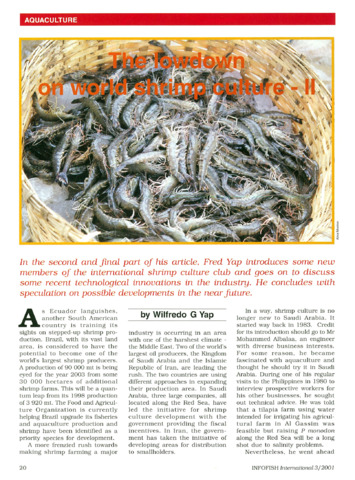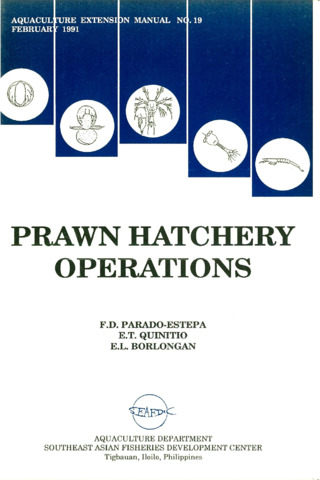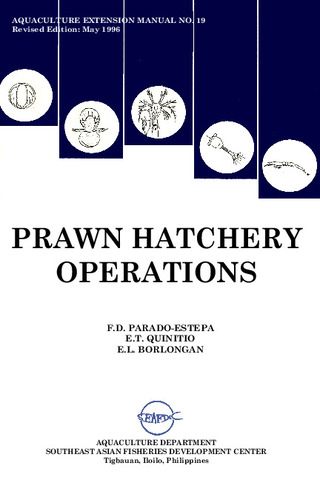| dc.contributor.author | Primavera, Jurgenne | |
| dc.contributor.author | Lebata, Ma. Junemie Hazel L. | |
| dc.date.accessioned | 2014-01-13T06:35:05Z | |
| dc.date.available | 2014-01-13T06:35:05Z | |
| dc.date.issued | 2000 | |
| dc.identifier.citation | Primavera, J. H., & Lebata, M. J. H. L. (2000). Size and diel differences in activity patterns of Metapenaeus ensis, Penaeus latisulcatus and P. merguiensis. Marine and Freshwater Behaviour and Physiology, 33(3), 173-185. | en |
| dc.identifier.issn | 1023-6244 | |
| dc.identifier.uri | http://hdl.handle.net/10862/1882 | |
| dc.description.abstract | The nursery function of mangroves as shelter has been postulated to explain the positive correlation between shrimp catches and mangrove area. This study was undertaken to document shelter use and other activities in mangrove‐associated penaeids and to determine diel and size differences relating to these activities. Juvenile Metapenaeus ensis, Penaeus latisulcatus and P. merguiensis collected from mangrove areas in Guimaras, central Philippines and stocked individually in glass tanks (= replicates) provided with artificial shelters and sand substrate were observed every hour for 25 h. Size classes tested were very small (1–5.9 mm carapace length); small (6–10.9mm CL); medium (11–15.9mm CL); large (16–20.9mm CL); and very large (21–25.9 mm CL). Due to limited juvenile supply, only 3 sizes were tested for each species: P. merguiensis (very small to medium), M. ensis (small to large) and P. latisulcatus (medium to very large) with 5 replicate animals (one per tank) per size. Juvenile M. ensis and P. latisulcatus showed a strong diel periodicity of daytime burial and nocturnal activity. In contrast, P. merguiensis showed active swimming and feeding throughout the day and night. Very small to small P. merguiensis were observed on the shelters, but burying was exhibited only by a few medium‐sized juveniles. This shelter use is consistent with observations of small P. merguiensis entering the mangrove forest (where roots, twigs, etc. contribute to structural complexity) on the flood tide and concentrating in the shallow, turbid waters of adjoining creeks during ebb tide and slack water. | en |
| dc.language.iso | en | en |
| dc.publisher | Taylor & Francis | en |
| dc.subject | Penaeus latisulcatus | en |
| dc.subject | Penaeid shrimps | en |
| dc.subject | Metapenaeus ensis | en |
| dc.subject | Penaeus merguiensis | en |
| dc.subject | Philippines | en |
| dc.subject | Banana prawn | en |
| dc.subject | Greasyback shrimp | en |
| dc.subject | Western king prawn | en |
| dc.title | Size and diel differences in activity patterns of Metapenaeus ensis, Penaeus latisulcatus and P. merguiensis | en |
| dc.type | Article | en |
| dc.citation.volume | 33 | |
| dc.citation.issue | 3 | |
| dc.citation.spage | 173 | |
| dc.citation.epage | 185 | |
| dc.citation.journalTitle | Marine and Freshwater Behaviour and Physiology | en |
| dc.subject.asfa | activity patterns | en |
| dc.subject.asfa | marine crustaceans | en |
| dc.subject.asfa | commercial species | en |
| dc.subject.asfa | cultured organisms | en |
| dc.subject.asfa | diurnal variations | en |
| dc.subject.asfa | feeding behaviour | en |
| dc.subject.asfa | fisheries | en |
| dc.subject.asfa | juveniles | en |
| dc.subject.asfa | mangrove swamps | en |
| dc.subject.asfa | nursery grounds | en |
| dc.subject.asfa | ontogeny | en |
| dc.subject.asfa | shrimp fisheries | en |
| dc.subject.asfa | size distribution | en |
| dc.subject.asfa | swimming | en |
| dc.subject.asfa | mangroves | en |
| dc.subject.asfa | substrata | en |
| dc.identifier.doi | 10.1080/10236240009387089 | |



